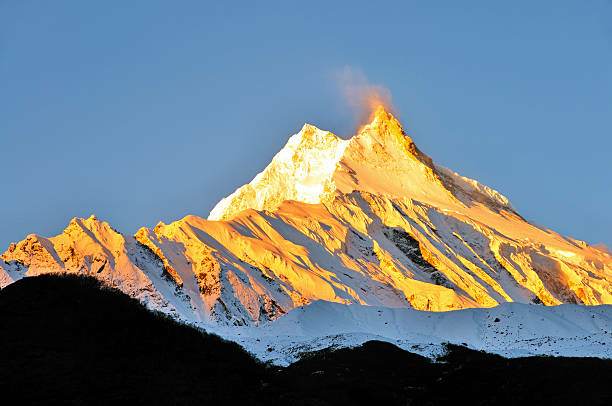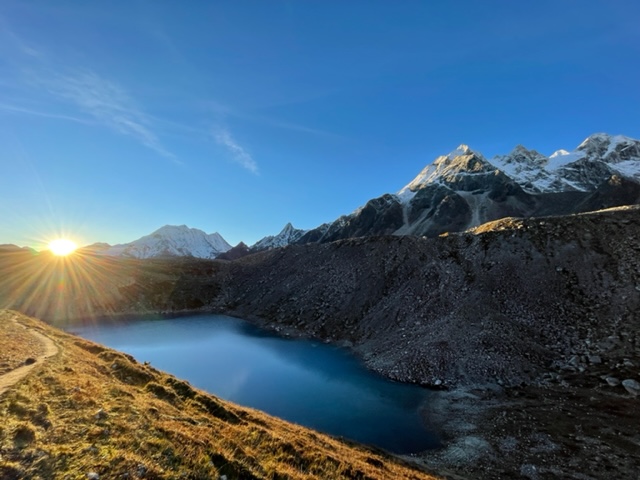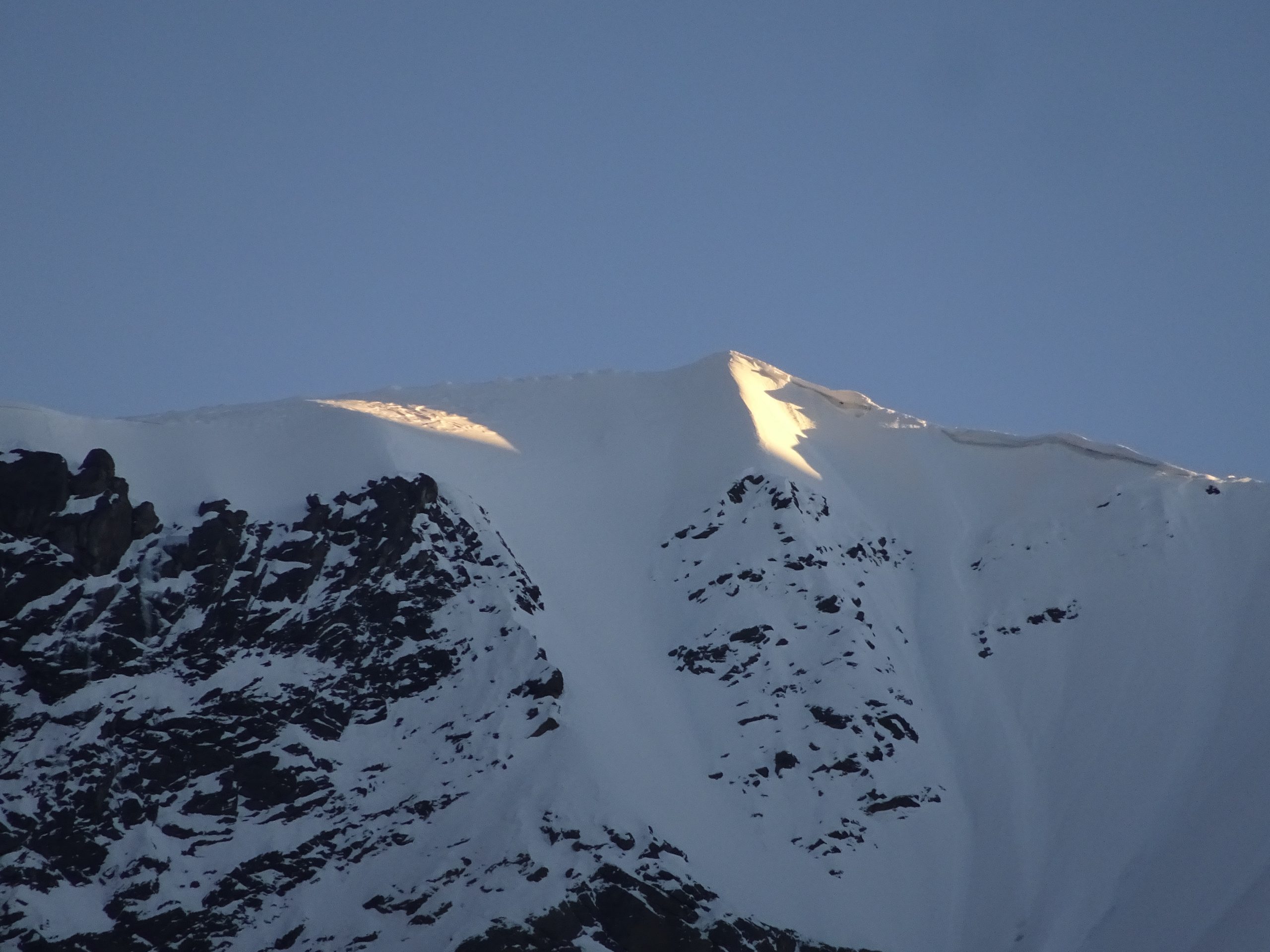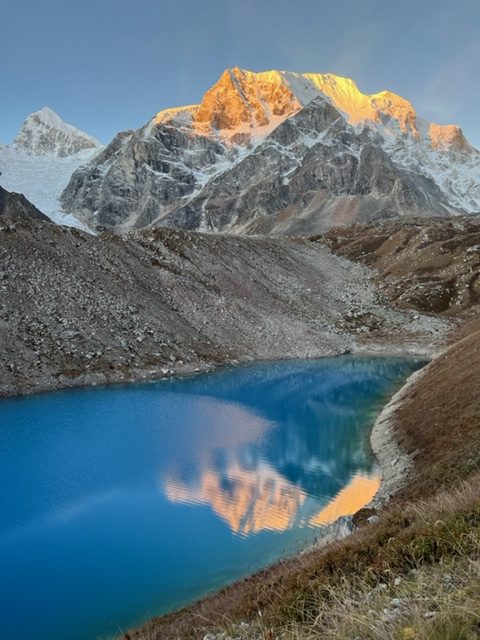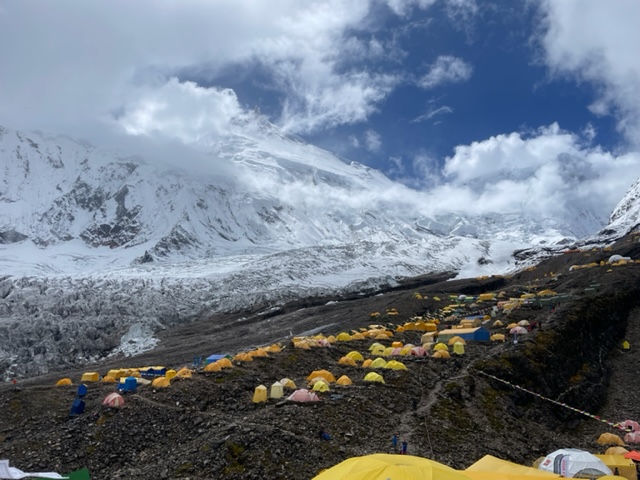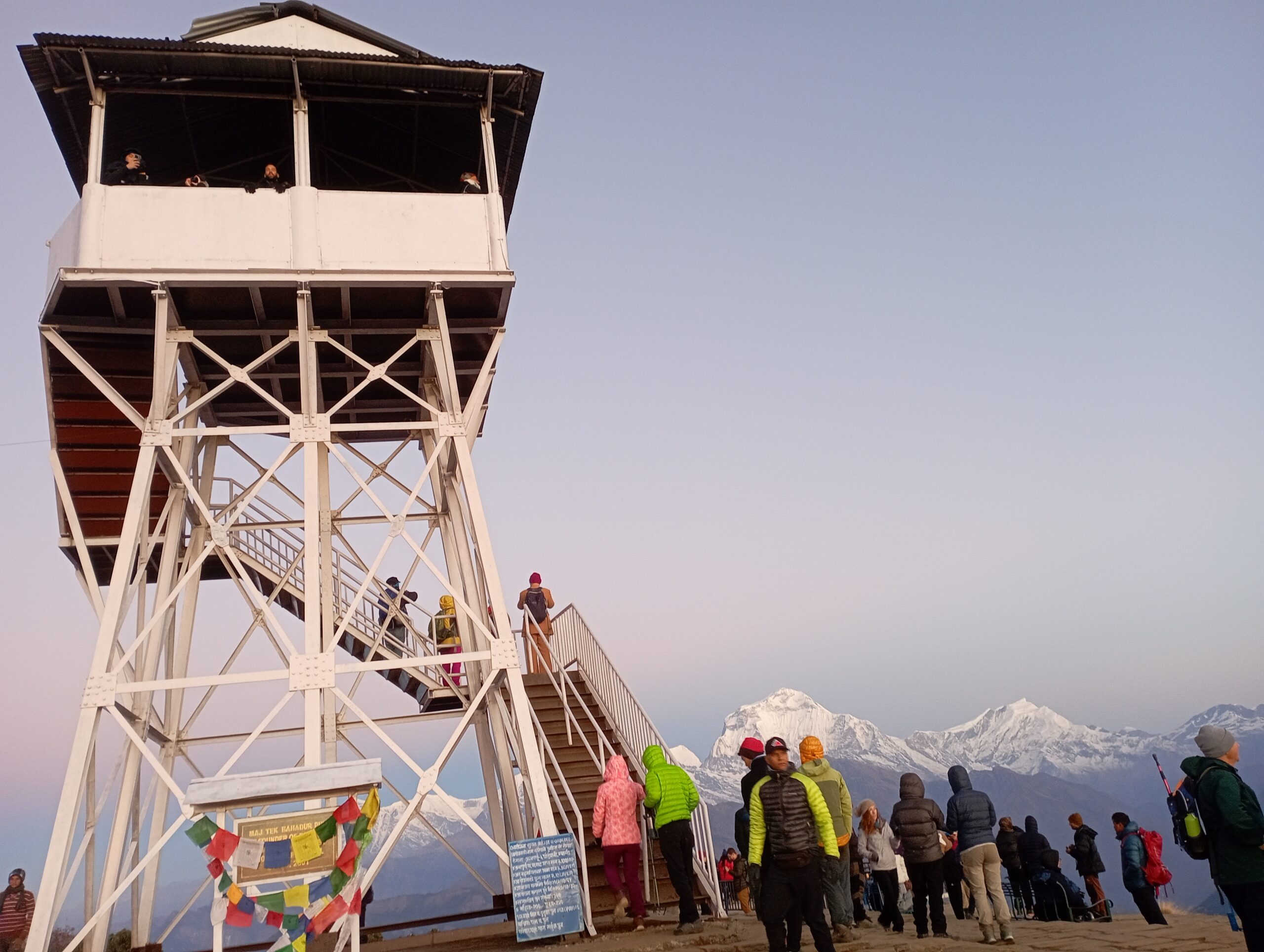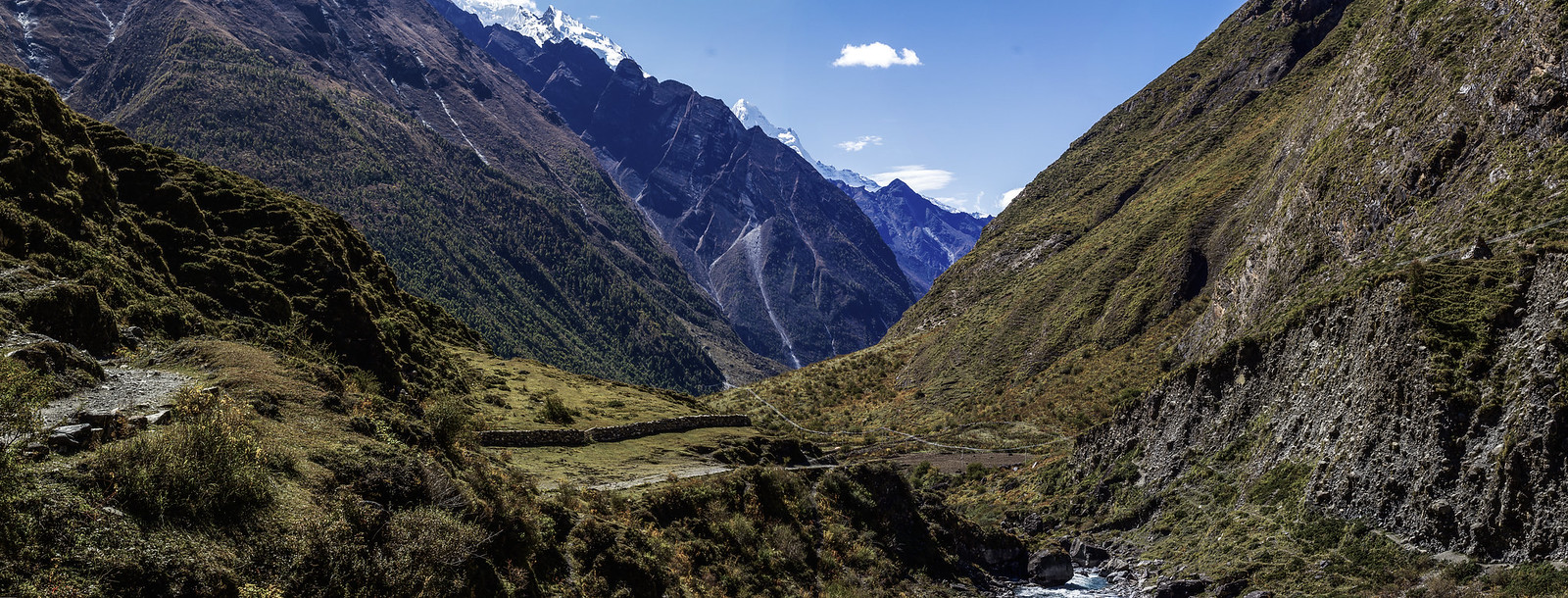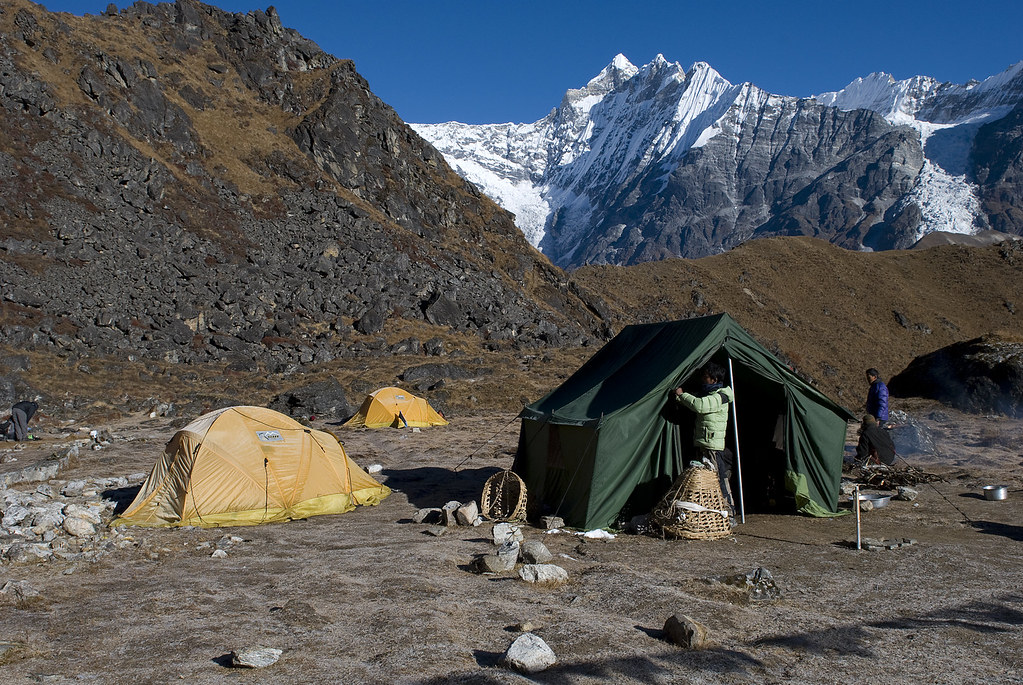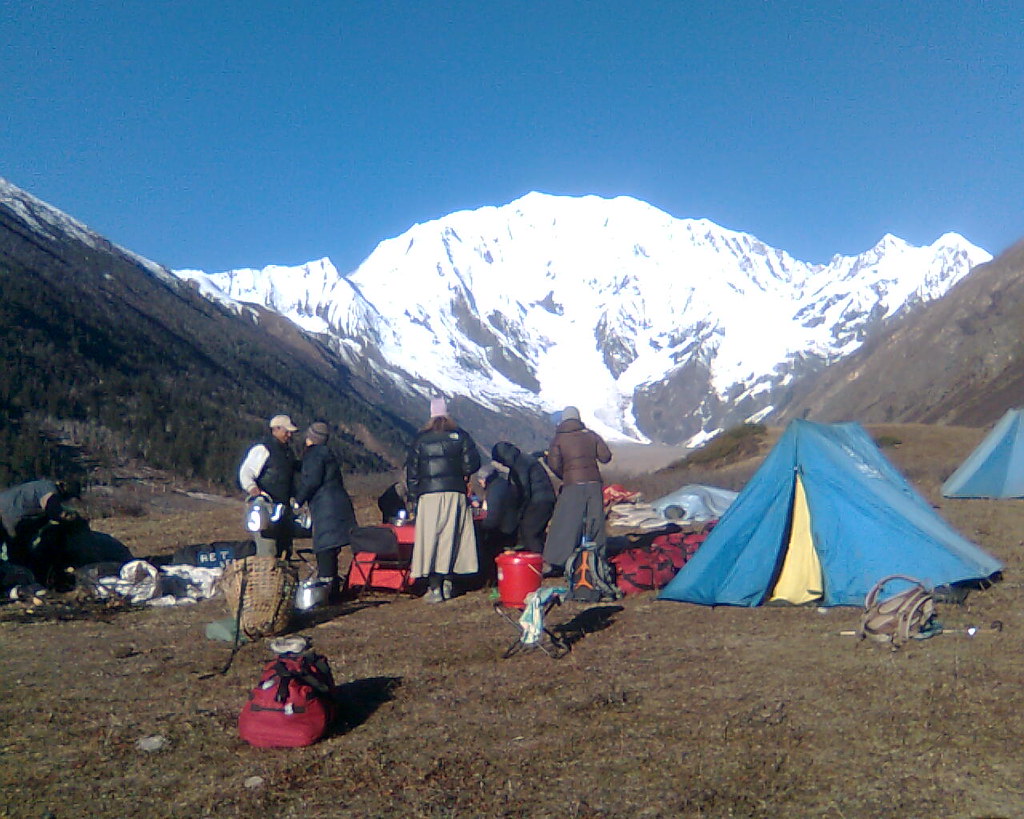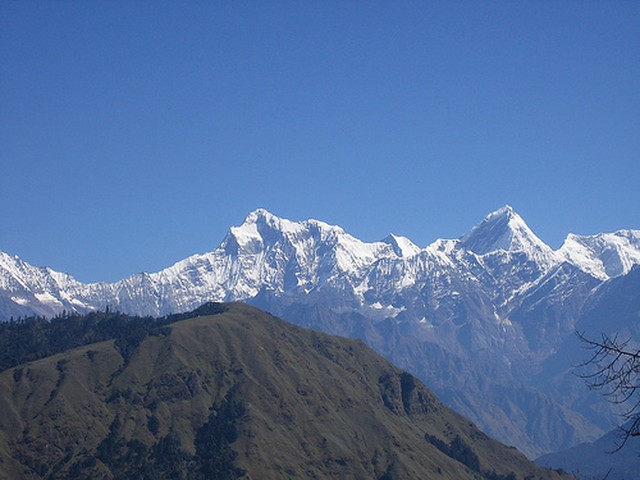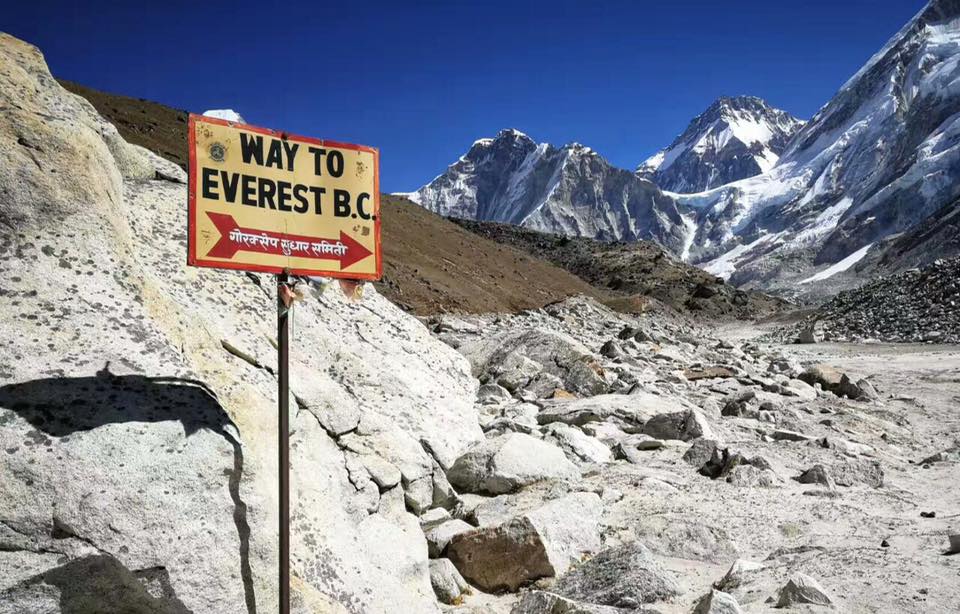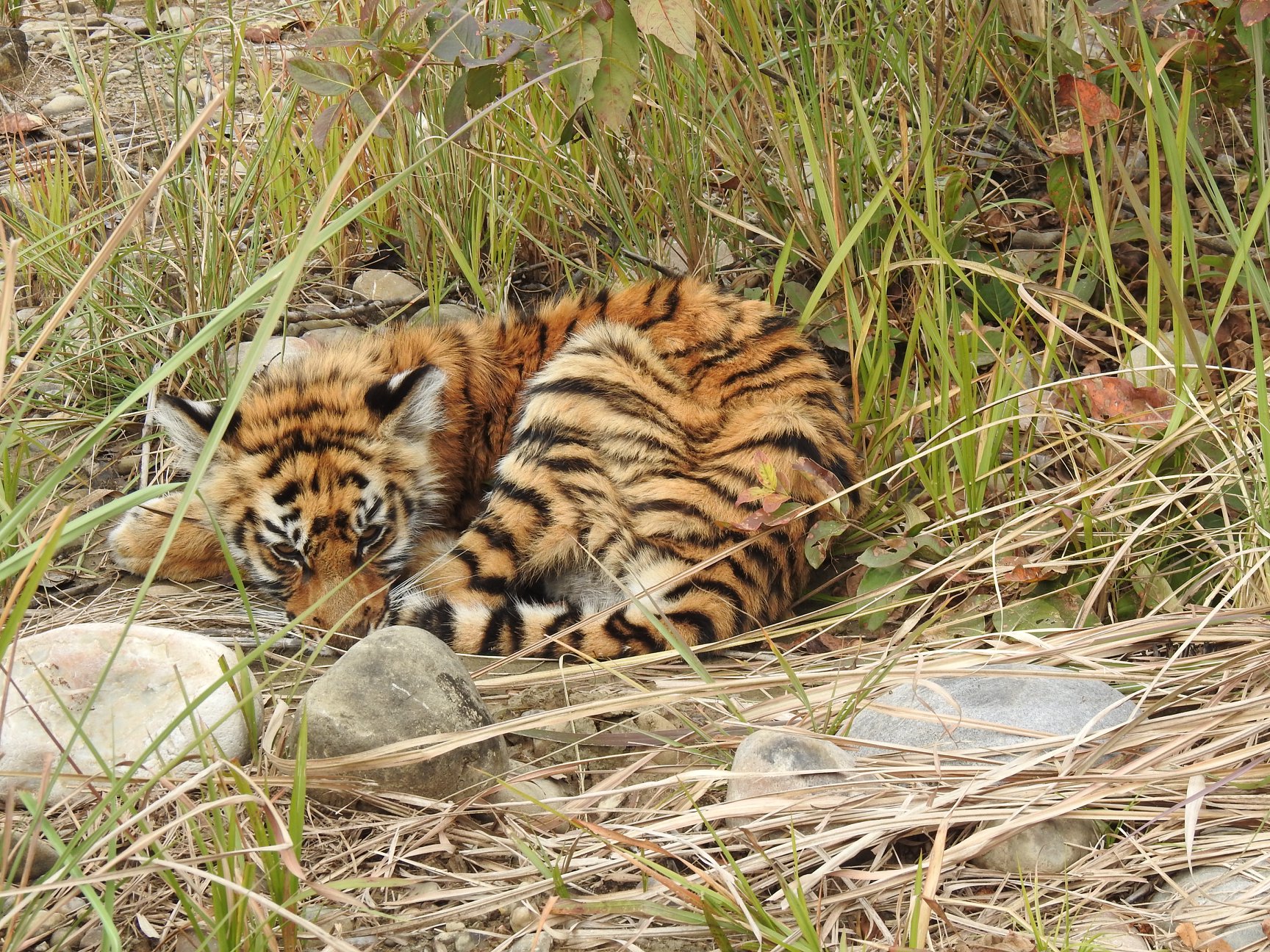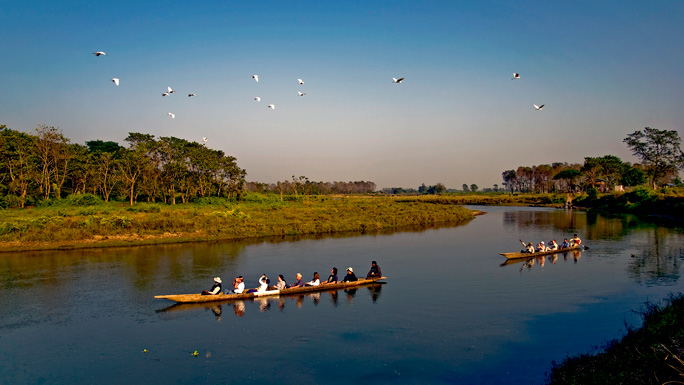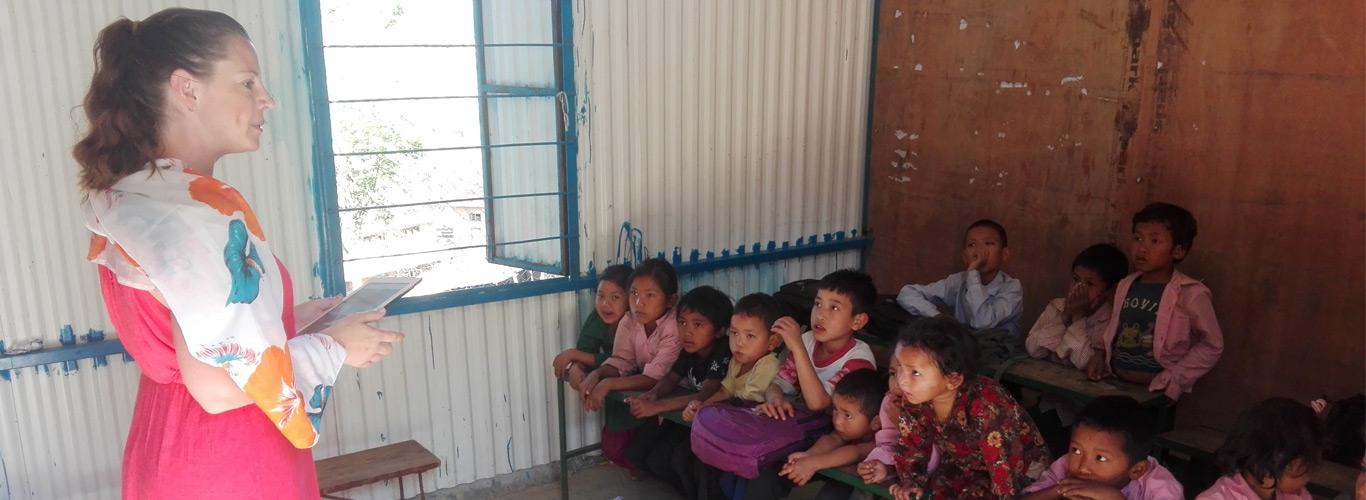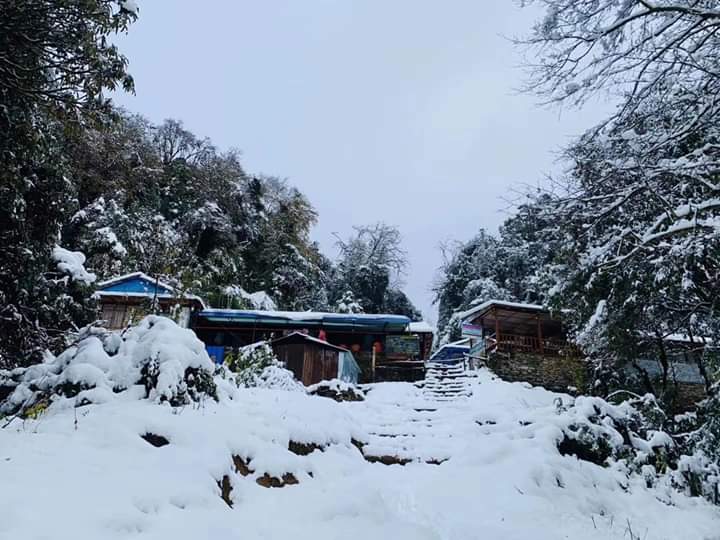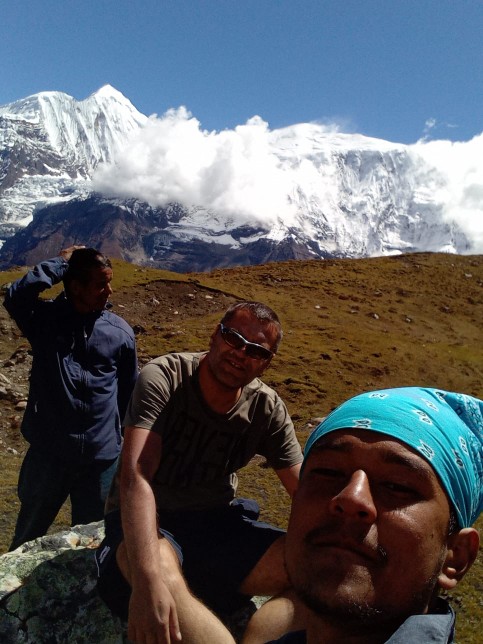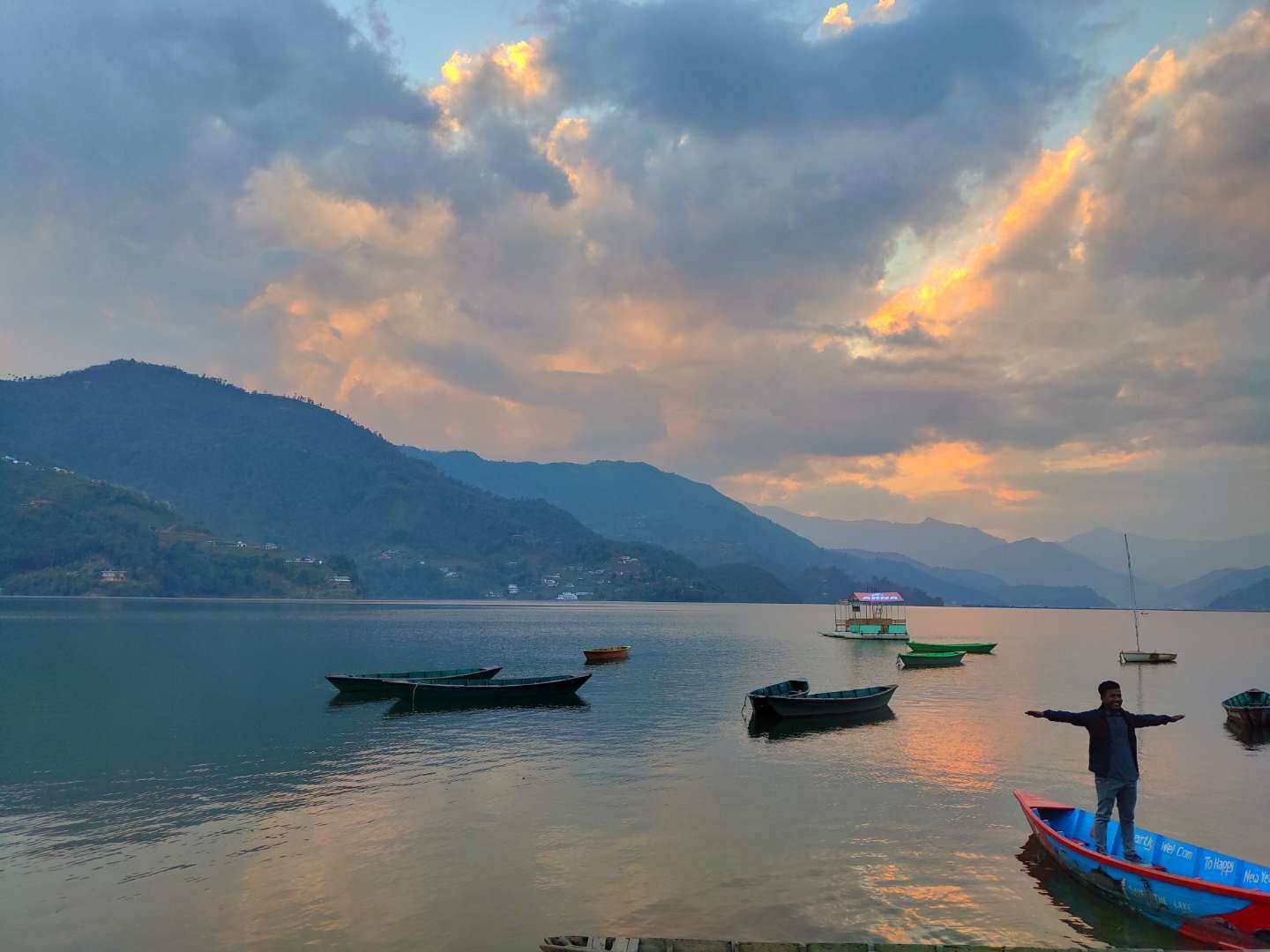Manaslu Circuit Trek
Manaslu circuit trek is one of the most adventurous and complete trekking routes in Nepal. It’s a popular rural trail in the central Himalayas. Especially for thrill-seekers wanting an exceptional trekking experience in the region. Staying at the locally operated homestays and teahouse, one can witness the bliss of authenticity here. The monasteries, Chortens, and monuments of the Manaslu Conservation Area make this trek an ideal substitute for the Annapurna Circuit. The Larkey La pass (5130 m) is a fantastic feat with the views of snow-capped peaks touching the horizon.
Mt. Manaslu is situated as the 8th highest peak in the world (8163m), listed in World best Heritage sites. It is the witness of the ultimate rich in local heritage and geographical diversity of the region. So, it has been popular among travelers and adventure seekers. It’s located in the Western region of Nepal. Gumba, Monasteries, and Shrines represent the Hindus and Buddhist traditions. Whereas Yak, Sheep, and Chauri are the domestic animals use in domestic products. Such as Churpi, Woolen clothes, and many more products supplied all over the world. Some of the well-known villages you can reach to experience the Himalayan lifestyle are Sama gau, Tatopani, Larke Bazaar and many others.
Solo trekkers are often tentative to do such high-end trek with proper assistance and aid from Manaslu Circuit Trekking. For different parts of a year trekking experience, climate, and nature varies a bit with a different result each time. For a better experience of Manaslu trek, you should avoid relentless winter and rainy monsoons. With our aid and guidance from Himalaya Sanctuary get the best of what Manaslu has to offer.
Day 01: Arrival at Tribhuvan International Airport (TIA), Kathmandu & Transfer to Hotel
Day 02: Sightseeing in Kathmandu and Trek preparation
Day 03: Drive from Kathmandu to Sotikhola (710m) 8 – 9 hours
Day 04: Trek from Soti Khola to Maccha Khola (900m): 5 – 7 hours
Day 05: Trek from Maccha Khola to Jagat (1410m): 6 – 7 hrs
Day 06: Trek from Jagat to Deng (1,804m): 6 – 7 hrs
Day 07: Trek from Deng to Namrung (2630m): 6 – 7 hrs
Day 08: Trek from Namrung to Samagaon (3530m): 6-7 hours
Day 09: Trek from Samagaon to Pungyen gompa. Back to Samagaon: 6 – 7 hours of exploration
Day 10: Trek from Samagaon to Samdo (3860m): 4 – 5 hours
Day 11: Trek from Samdo to Dharamsala (4460m): 4 – 5 hours
Day 12: Trek from Dharamsala via Larkya la (5160m) to Bhimthang (3720m): 8 – 9 hours
Day 13: Trek from Bimthang to Dharapani (3560m): 5 – 6 hours
Day 14: Drive from Dharapani (1900m) to Kathmandu (1320m)
Day 15: Departure
Day 01: Arrival at Tribhuvan International Airport (TIA), Kathmandu & Transfer to Hotel
After you land, one of the representatives from Himalayan Sanctuary Adventure will be waiting to receive you at the airport. After a brief introduction, you will head towards the hotel in Thamel. After some rest, visit us at our office. We will introduce you to our staff and guides for the Manaslu Trek. Overnight at Kathmandu.
Day 02: Trek Preparation and Explore Kathmandu Valley
Today first you will explore numerous UNESCO world heritage sites in Kathmandu. These include the Swyambhunath Stupa, Pashupatinath Temple, Boudhanath Stupa, Kathmandu Durbar Square and, many other places. It will be a mesmerizing moment here in Kathmandu to witness the beauty of nature, and different cultures with different temples, architecture, and monuments. End of the day you will be well prepared for the Manaslu trip with the required stuff needed during the trip.
Day 03: Drive to Arughat (6 hrs.) then trek to Soti Khola (2-3 hrs.)
It will take about seven hours to reach Arughat from Kathmandu. Our journey will begin early in the morning after breakfast. You’ll drive along the Highway to Arughat We start walking through beautiful paddy fields, Warm villages following the Budhi Gandaki River, and climb over and down Kyoropani to the Budi Gandaki junction and the Soti Khola. You can enjoy the refreshing swim near a spot from here. Overnight at a lodge/teahouse in Soti Khola.
Day 04: Soti Khola to Machha Khola (890m):
The next morning after enjoying the delicious breakfast, you will start your trek through the rocky, small, and narrow path from Soti Khola to Machha Khola. Although the path is rough, you will the witness the stunning scenery of the countryside view that will be more engaging. You should be careful during the rocky path as well. It takes 6 hours to reach Machha Khola. Overnight at a lodge in Maccha Khola.
Day 05: Machha Khola to Jagat (1410m):
We resume our journey from Machha Khola following Tharo Khola through the narrow path and finally to Khorla Besi. After a few times will reach the most popular hot spring, Tatopani. We can relieve our stress and tiredness by taking a hot bath in Tatopani. Then we will cross the Suspension bridge of the Budhi Gandaki River to reach Thado Bharayag. Walking along the river we will reach Jagat village. Overnight at a lodge/teahouse in Jagat.
Day 06: Trek toward Deng (1860m)
Resuming our trek, initially, we climbed a rocky cliff towards Siribas and continued toward Ghatte Khola. Crossing the suspension bridge we’ll reach Philim village, the settlement of the Gurung community. You will have lunch and continue your journey from grassy slopes and some cliffs to cross over Budi Gandaki to reach a small village called Deng. We will rest for the day here. Overnight at a teahouse/lodge in Deng.
Day 07: Deng Village to Namrung (2630m)
We begin our trip by crossing over the Budhi Gandaki Bridge to climb a bit far to join the trail from Bhi. Headed through the forest, green valley, and houses of ethnic groups of the Manaslu region. The trail was then processed to Ghap through several landscapes. You should follow the instruction of your guide and be extra concerned about the path. After all the obstacles we finally reach up to Namrung Village. After a wonderful sunset from the village, we will rest for the day. Overnight at a teahouse/lodge in Namrung.
Day 08: Namrung to Samagaun (3530m)
We’ll aim to reach Samagaun from Namrung, We start our trip from Namrung to pass through Banjam, Lihi, Sho, Lho, and Sayla. We are about to witness the view of the Monastery before reaching Lho. Heading toward the Lihi, there will give you a view of Ganesh Himal, Naike Peak, and Himchuli Peak. Continue our trek, it takes 1 hour and 30 minutes to reach Lho next 2 hours to reach Sayla from Lho. While on Sayla, we will witness the views of Nadi Chuli, Manaslu, Himalchuli, Manaslu, Nike Peak, Siring Himal, and more. We’ll reach Samagaun in the afternoon. Overnight at a lodge/teahouse in Samagaon.
Day 09: Samagaun to Pungyen gompa
Today you will explore the Samagaun Village, you are about to know the traditional and cultural Monasteries, as well as the geographical cultivation such as potatoes and barley, flourish. Most people prefer to wear woolen clothes made up of sheep’s wool and involve in the manufacture of blankets, and rugs for trade. Monasteries have impressive designs and carvings which reflect the history of Tibetan settlers. There exist 8 different monasteries and among them, Pemba Chholing Gompa is the largest. You can witness the wonderful view of Manaslu, as well as the beautiful lake that lies, ascend of monasteries. After trekking for 5-6 hours, we will arrive at Manaslu Base Camp. You can also visit Pungyen Nunnery (3870m) lies above Pungyen Glacier.
Day 10: Samagaun to Samdo (3860):
Resuming today’s trek descends towards Budi Gandaki. The journey is relatively easy and it lies above the self above the Gandaki River. You will get to see the stone arch and plane granny land before you enter the village. Attractive place, get to see yaks and goats around the fields and the stunning view of Samdo Peak (6335m). In about 4-5 hours, we will be in Samdo village.
Day 11: Samdo to Dharmashala (4460m):
We start our day trek by crossing over the Budi Gandaki River after some ascending hike you will be seeing a glimpse of the Larkya glacier. Visiting around the valley and a way upward again to reach the Dharmashala. Overnight at a lodge/teahouse in Dharmashala.
Day 12: Dharmashala to Bimtang via Larkya La (5135m):
New day toward a new destination, after breakfast we headed toward Larkya glacier in the north direction offer a clear view of Larkey Peak and Cho Danda. From here we start the trek to reach Larkey La Pass which is the highest point of our whole trek. The climb is challenging and in some steep sections, you should follow the instructions of the guide properly. One can have a panoramic view from the Pass. After some time here, we’ll start our long descent to Bimthang. Rest for the day after reaching Bimthang village. Overnight at a lodge/teahouse in Bimthang.
Day 13: Bimtang to Dharapani:
Today, we descend to Dhud Khola. We cross through the forest full of Rhododendron and pine to reach Dharapani, where we put off for a night’s stay. As the last walking day of the Manaslu Circuit, you will have plenty of scenery to enjoy throughout the trail. Overnight at a teahouse/lodge in Dharapani.
Day 14: Back to Kathmandu from Dharapani:
We will catch a Bus from Dharapani to Besisahar. Again we drive from Besisahar to Kathmandu. After the successful trek, we will transfer you to your hotel. Rest for a while and join us for a farewell dinner. Share some stories and feedback as well for the team. Overnight at a hotel in Kathmandu.
Day 15: Departure Day
On your last day in Nepal, head out for a brief souvenir shopping session near the hotel in Thamel Market. We will pick you up from the hotel and transfer you to TIA before the departure. The Manaslu circuit will remain with you forever alongside the lifelong memories and experiences from the trek with Himalayan Sanctuary.
Cost Included
- Pickups and Drop up.
- 3 Star Category Accommodations including Breakfast in Kathamndu
- Teahouses/Lodge Accommodation including Breakfast, Lunch, Dinner during the trek
- Kathmandu Valley Sightseeing
- Farewell dinner at the end
- Himalayan Sanctuary Adventure Duffel Bag
- Transportation by private Jeep
- An experienced English-speaking Trekking Guide, and porters to carry luggage (2 trekkers: 1 porter) including their salary, insurance, equipment, flight, food, and lodging
- All necessary paperwork and permits (ACAP, TIMS )
- Trekking insurance for all support crews
Cost Excluded
- Nepalese visa fee
- International airfare to and from Kathmandu
- Excess baggage charges
- Tour Guide and Entrance Fees for Sightseeing
- Lunch and dinner in Kathmandu
- Extra night accommodation in Kathmandu in case of early arrival, late departure, and early return from the mountain(due to any reason) than the scheduled itinerary
- Travel and rescue insurance
- Personal expenses (phone calls, laundry, bar bills, Tea, Coffee,hot and cold drinks, WiFi, battery recharge, extra porters, bottle or boiled water, hot shower, etc)
- Tips for guides and porters
The Following equipment list is only a guideline. You need to bring the listed items, however, you can choose from your preferred brands using your expertise. You can also shop the below equipment and clothing at a reasonable price at stores in Thamel, Kathmandu. The most important fact that one should keep on mind is that one should have enough clothes to tackle the cold weather in the Himalayas.
General
- Sleeping bag
- Rucksack bag
- Down Jacket
- For Head and Neck
- Hat to keep the heat of the sun off from your ears and neck
- Lightweight Balaclava
- UV protection Glacier glasses
- Headlamp with extra batteries
- A neck warmer
Hand
- 1 pair of liner gloves
- 1 pair warm gloves (preferably woolen)
- 1 pair of shell gloves
- Body
- Light thermal tops
- Fleece jacket or pullover
- Waterproof shell jacket
- 2 women sports bras (Synthetic)
Legs
- 2 pairs of nylon hiking shorts
- 4 Underwear
- 2 pairs of lightweight long underwear
- 1 pair softshell pants
- 2 pairs trekking pants
- 1 pair of cotton pants
Feet
- 4 pairs of liner socks
- 3 pairs of heavy weight socks
- 1 pair of lightweight socks
- 1 pair of waterproof trekking boots
- 1 pair of light trekking shoes
- Medicines and First Aid Kits
- Excedrin for headaches
- Ibuprofen for general aches and pains
- Immodium or Pepto Bismol capsules for diarrhea
- Diamox 125 mg for altitude sickness
Miscellaneous
- Passport and extra passport photos (4 copies).
- Airline ticket
- Lip balm
- Sunscreen
- Pocket knife
- Water purification Iodine tablets
- Toiletry kit
- Toilet paper
- Hand wipes
- Liquid hand sanitizer
- Towel
1. Can I trek the Manaslu Circuit Trek independently?
No, you can’t trek the Manaslu Circuit Trek independently or alone. According to the Nepal Government, a minimum of two trekkers are compulsorily required to make the Manaslu Circuit trek permit. You can’t trek alone due to safety and restricted region.
2. Why Manaslu Circuit Trek is restricted?
You are not alone to ask the question about why Manaslu Circuit Trek is restricted. One major reason behind this restricted region is that Nepal Government especially Nepal Tourism Board and other concerned governing bodies where jointly aim to preserve this place for making it attractive to trekkers from all around the world. Another reason is to ensure security for trekkers while passing open border pointpoints – Larkya La Pass, Rui La Pass, and Tsum Valley which shares the border with Tibet. Hence, Manaslu Circuit Treks is termed a restricted region in Nepal.
3. How difficult is Manaslu Circuit Trek?
To answer this question, you should know your physical fitness level. You should also be able to walk 6-7 hours a day. There is one special day when you have to walk before sunrise to avoid storms at Larkya La. Because the guide has a strict deadline to pass the Larkya La before noon which should be operated according to the itinerary. Similarly, at some point like Larkya La Pass (5160m), there is a step down which makes it a little harder to pass due to the icy path. In that case, you can use crampons on boots to pass the icy path to reach Bimthang. Larkya La Pass is the highest point as well as the longest day in Manaslu Circuit Trek. If you complete this day, then another path is quite easy to trek down around the Annapurna Region. If you have the willing power or dedication to complete the Manaslu Circuit trek. Then, it’s not that much difficult. In between the trekking, the guide will suggest you take a different level of walking pace depending on your destination. This will make your trekking a lot more physically friendly.
4. If I am alone Can I join other trekkers for a permit
Yes, you can join with other trekkers for a special trekking permit. For that, you must be flexible in terms of duration. In peak season, you will easily find another trekker for a permit. Whereas in the low season, it’s quite difficult or time-consuming to find other trekkers who are heading to Manaslu for that particular month. If you inform us a month before arriving in Nepal. Then, we may find another trekker for a permit. Contact us.
5. How is transportation from Kathmandu to Soti Khola’s start point?
From Kathmandu to Solti Khola’s start point, you will be traveling to the point points hillside via Prithvi Highway until Malekhu. After that, you will follow the narrow off-road till to Soti Khola. It’s quite a long off-road journey of about 7-8 hours. You have two options to get Soti Khola’s start point. The first option is to take four wheels of a private jeep, which can accommodate 7 people. Another option is to take a morning local bus from New Buspark, Kathmandu. Expect some crowd, local gossip, too many stops, and opportunities to make new local friends as well as an adventure while traveling from the local bus.
6. Do we need Travel Insurance?
Yes, you need travel insurance to overcome unforeseen circumstances such as; Bad weather (Snow, Storm, Landslides, and other natural disasters), Acute Mountain Sickness (AMS), food poisoning, and physical accidents.
7. What sort of trekking clothing and equipment do we need for Manaslu Circuit Trek?
We have listed the trekking clothing and equipment you need for Manaslu Circuit Trek. Find here!
8. What kind of food and accommodations can be found in Manaslu Trek
Around Manaslu Trek, there are new as well as old teahouses that were built after the earthquake. So, don’t expect to get luxurious accommodations. You will get a room with a comfortable bed and shared a bathroom with a hot shower facility (private expenses). Nowadays, you can also get connected to wifi from teahouses (private expenses). Talking about the food types, you can find the fresh local meal which will be made after your order. Expect to get some healthy foods as well as organic vegetables such as; Nepali Dhal Bhat, MoMo, Macaroni, Noodles, Pizza, and others. Don’t forget to take caution before drinking water. You can refill the safe drinking water (private expenses) from every teahouse situated around Manaslu Circuit Trek.
9. Which is the best season for Manaslu Circuit Trek?
The best seasons for Manaslu Circuit Trek are March, April, and May, and the last week in September to mid-December. The peak season is in October. The low season is the monsoon (June to September) due to rain and hazed weather. In December to late February to early March, there is a probable chance of winter snow and the lodge will be closed mainly in Laryka Phedi, Bhimthang.
10. What happens If I or my friends get sick while trekking Manaslu Circuit?
If you get sick while trekking, you can ask the guide for normal precautions. If that doesn’t help, try to go to a lower altitude for treating altitude sickness. And, If the situation gets worse such as; some sort of physical accident then our guide will help you to evacuate from trekking via a rescue flight.
11. Can I obtain a visa for Nepal upon arrival at the airport?
Yes, you can obtain a visa easily upon your arrival at Tribhuvan International Airport in Kathmandu. A tourist Visa with Multiple Entries for 30 days can be obtained by paying US $ 40 or equivalent foreign currency. Similarly, a Tourist Visa with Multiple Entries for 90 days can be obtained by paying US $ 100. Please bring 2 copies of passport size photos.
12. How much additional money do I need per day ?
It depends on your spending habits. Generally, in Kathmandu and Pokhara, you can allocate USD 10 to USD 15 for lunch and dinner. USD 20 to USD 30 per person a day will be enough to buy meals, bottles of water, and chocolates, pay for the hot shower and, a few drinks during the trekking.
13. What is the drinking water facility in the mountain?
Bottled water is easily available at the lodges and teahouses, which you can buy at the cost of USD 1 at lower elevations up to USD 4 to higher elevations per liter.
If you are planning to drink normal water during the trek, purifying water with any sort of purification tablet or drop is a must. You can bring your purifier or can purchase it in Kathmandu.
14. What is the temperature rating of the sleeping bag that you lend to trekkers?
The temperature rating of the sleeping bags we provide is about -10 degrees C (14 Degrees Fahrenheit), our guide can provide a liner or extra blanket from the lodge in the mountain if the sleeping bag is not warm enough for you
15. Do your guides have trekking guide certificates from the Hotel Management and Tourism Center? Have they received first aid training for high altitude?
Yes, they have all received a 45-day training from the Hotel Management and Tourism Center in Nepal. The guides have also received high-altitude first aid training from KEEP (Kathmandu Environmental Education Project)
16. Can I use credit cards in the places I visit in trekking?
In Kathmandu and Pokhara, yes – to some extent. Once you are out of the cities, all you need is cash. Please change the currency to local Nepali Rupees before you go to the mountains
17. I am a Vegetarian, is that a Problem?
No problem at all because mostly, the lodges serve vegetarian meals. We always recommend our clients eat vegetarian meals to avoid food poisoning, eating heavy meals and non-vegetarian meals at high altitudes is not safe for the stomach.
18. Do I need to bring toilet paper for the trek?
Almost all the guest houses sell toilet paper so you can buy it there. Hand sanitizer and a towel you must bring your own.
| Start Date | End Date | Price in USD | Availability | Booking | Note |
|---|
Avabillity Options
OPEN: This date is available and open for bookings. Go for it!
GUARANTEED: Guaranteed departure. Seat Available.
LIMITED: Guaranteed departure, Limited seat. You can send booking request for availability.
FULL:This date is currently unavailable. Please contact us if you are interested in traveling on this date.

